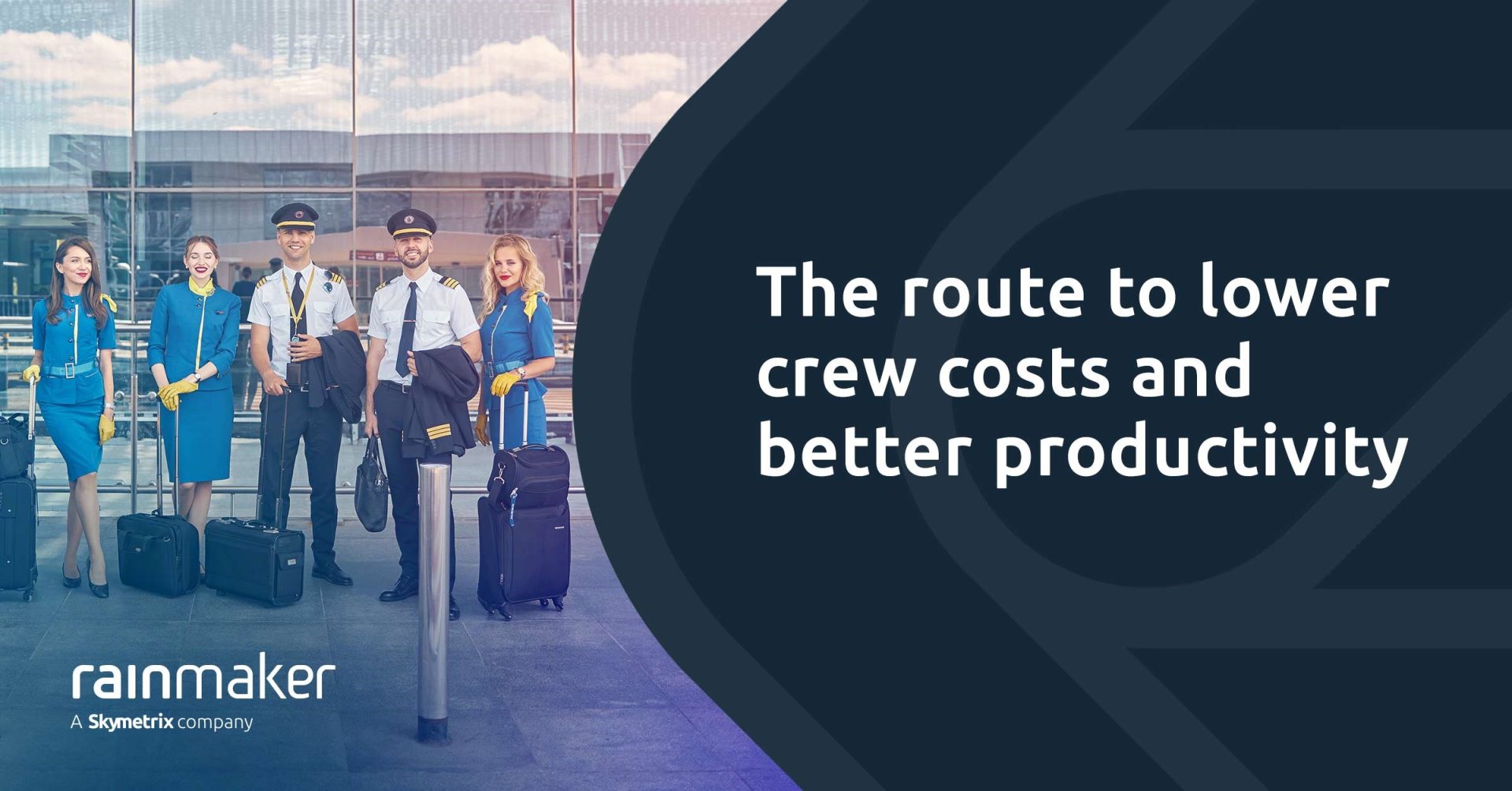
In our last blog, we looked at the pay process, why it’s broken in many airlines and how you can fix it to improve crew retention and airline profitability. In this blog, we’re moving on to look at how you can control crew costs and enhance productivity to positively impact the performance of your airline — as well as what can happen if you don’t.
It’s a challenging time for airlines right now, with crew shortages and very slim margins. But there are efficiencies that can be found when you manage your flight crew more effectively.
Why is such a huge spend difficult to control?
Although crew costs make up a significant chunk of an airline’s total operating costs — 12% to 15% — many airlines can’t rigorously analyze how crew plans are performing to ensure that this money is well spent. There are several reasons for this. To understand these, we need to first recap the key stages of the flight crew value chain. These are:
- Manpower Planning
- Training
- Crew Planning
- Build & Assign Trips
- Trip Trading
- Day of Operations.
If you want to read more about what’s involved in each stage, check out our previous blog on this topic.
Reason 1 – Missing the right information from Day of Operations
The first barrier that gets in the way of airlines understanding the performance of crew plans and schedules, is missing and inaccurate information. In our experience, airlines rarely have easy access to crucial information from Day of Operations, and it’s usually not in a form that allows them to assess performance, identify issues and refine crew plans. Why? Because the data is dynamic, difficult to extract, and difficult to structure in a way that’s useable. Furthermore, data quality issues add to the pain.
But imagine if your crew management stakeholders could routinely dig into data that showed how the crew schedules actually operated on the day, compared to the plan. They could then answer important questions such as:
- Which of the planned pairings broke and why?
- How did operational events impact crew costs?
- How big is the variation between planned and performed crew costs, and why?
- Were there any crew shortages or problems with the availability of appropriately qualified crew members?
- Was there adequate cover for crew sickness, fatigue, or for crew running out of flying hours due to delays?
- What crew productivity did you achieve versus the plan, and at what cost?
Answering these and many other questions is key to planning and operating more effective flight schedules, which improves crew productivity and drives down costs.
Reason 2 – Disconnected teams and silo culture
Separate functions and teams manage the Crew Planning and Day of Operations stages of the value chain. Each function is specialized and there is a basic handoff from one function to the next. This tends to result in a silo mentality and a linear process for managing flight crew.
Without a proper feedback loop from Day of Operations to Crew Planning, the same problems emerge time and time again. Mistakes are often repeated, and lessons not learned. For example, crew being pulled from scheduled flying duties to train, or the same trip breaking each month because it is poorly planned.
How this negatively affects airlines
Although common, these problems are not inevitable. Airlines can do several things to improve crew productivity and get more control over their crew costs.
1. Break down silos and encourage teams to work together towards a common goal. The goal is to operate a more effective crew plan, which will have a positive impact on employee experience as well as the airline’s overall performance and profitability. Communicating how everyone benefits from this, will be key to getting buy-in.
2. Adopt a continuous improvement culture. Organizations that innovate and look for ways to incrementally improve processes, are generally more successful. Having this as a company value which is embodied by all managers makes a huge difference.
3. Create ‘one version of the truth’. Important data needs to be pulled from key operational systems and centralized so that everyone is looking at the same, up-to-date information. Getting the right technology in place to do this, is essential.
4. Harness analytics to gain valuable insights. With centralized data, you will be able to use analytics tools to track KPIs around productivity, crew costs, and schedule disruptions. This helps you diagnose which pairings break and why and learn which areas of the crew plan need adjusting. For instance, are crew absence levels too high? Are reserve crew being properly utilized? Is there excessive deadheading and hotel nights?
5. Share insights with all relevant teams. The more teams that have access to these insights, the better. Providing appropriate and relevant access to analytics solutions for all stakeholders within the flight crew value chain, means that everyone can understand how well the airline is managing crew productivity and controlling crew costs. This also helps with point 1 — breaking down silos and encouraging joint working towards a common goal. A cloud-based analytics system is best, so it can be easily accessed by all staff, wherever they’re working.
How Rainmaker solutions can help
Rainmaker has two cloud-based solutions that work together to help you lower crew costs, increase productivity and improve crew retention and satisfaction.
Accurate and transparent pay is the foundation for better crew management, and this is made easy with Crew Pay Manager. Data from this solution and other sources then feeds our Crew Analytics solution to reveal the true performance of your flight crew. It pulls data from your core operational systems to report on hundreds of KPIs related to crew costs, crew utilization and crew productivity. You can also drilldown to discover exactly what’s causing cost variances and why pairings are breaking, so you can drive improvements to your flight crew plan.
If you’re ready to take control of your crew costs and productivity, and make a positive impact on retention and profitability, watch our webinar: Take your crew management to the next level.




